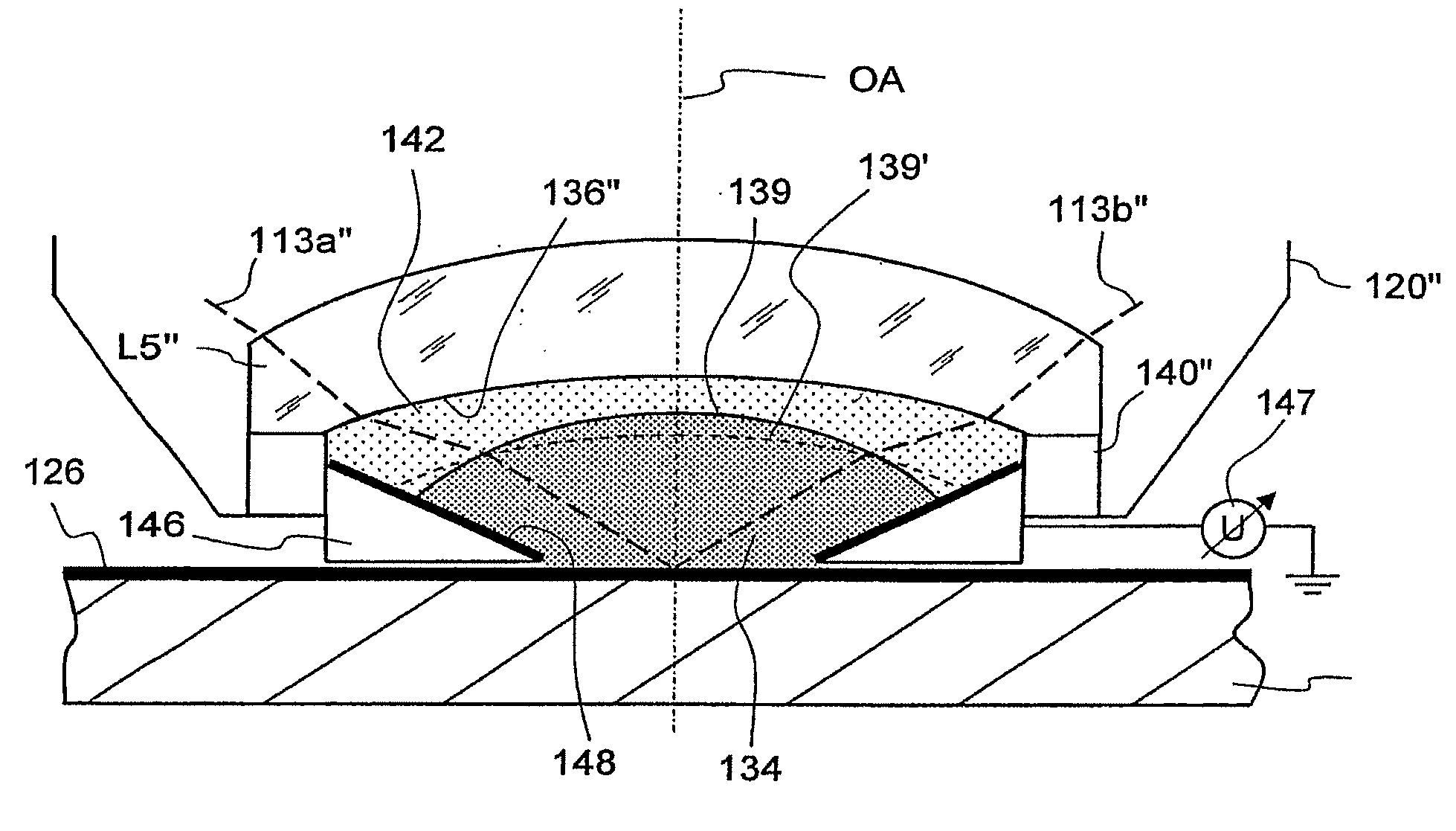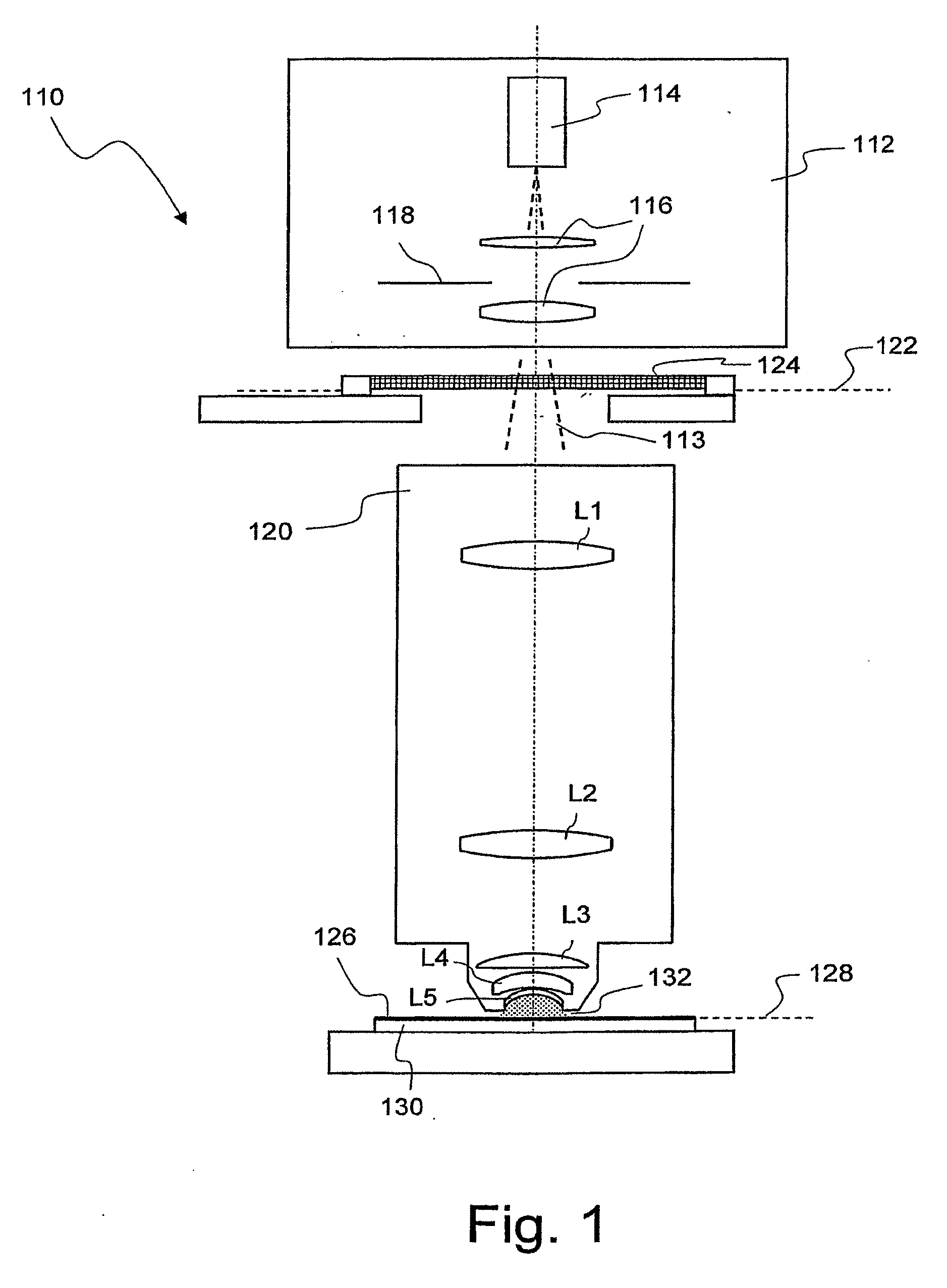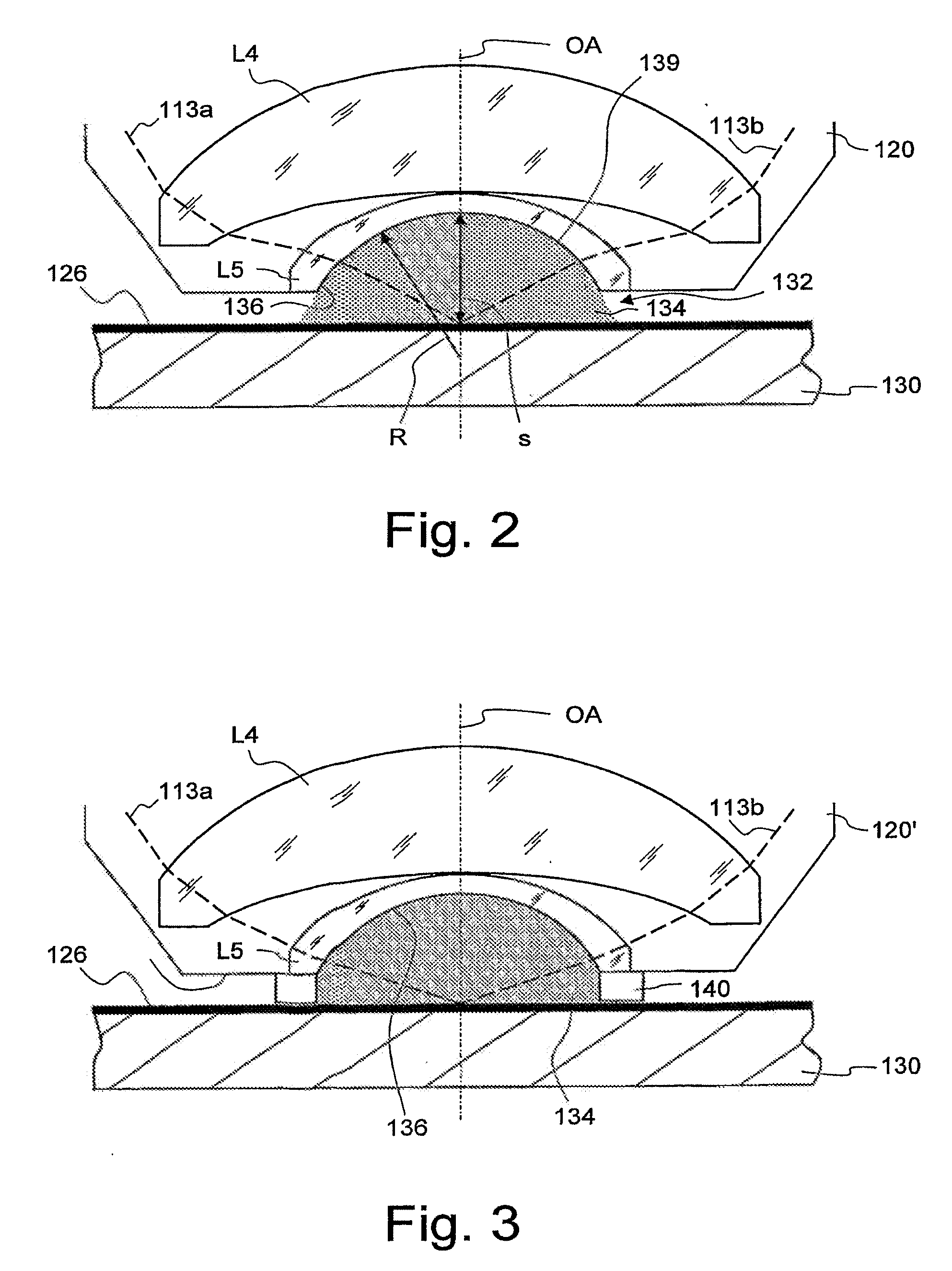Projection objective for a microlithographic projection exposure apparatus
a technology of exposure apparatus and projection objective, which is applied in the direction of microlithography exposure apparatus, printers, instruments, etc., can solve the problems of not only allowing to achieve very high numerical apertures, and achieve the effects of preventing undesired drainage, high incidence angle, and preventing contamination of immersion liquid
- Summary
- Abstract
- Description
- Claims
- Application Information
AI Technical Summary
Benefits of technology
Problems solved by technology
Method used
Image
Examples
Embodiment Construction
[0037]FIG. 1 shows a meridian section through a microlithographic projection exposure apparatus denoted in its entirety by 110 in a considerably simplified view that is not to scale. The projection exposure apparatus 110 comprises an illuminating system 112 for generating projection light 113 including a light source 114, illumination optics indicated by 116 and a diaphragm 118. In the exemplary embodiment shown, the projection light 113 has a wavelength of 193 nm.
[0038]The projection exposure apparatus 110 furthermore includes a projection objective 120 that comprises a multiplicity of lens elements, of which, for the sake of clarity, only a few are indicated by way of example in FIG. 1 and are denoted by L1 to L5. The projection objective 120 images a mask 124 disposed in an object plane 122 of the projection objective 120 on a reduced scale on a photosensitive layer 126. The layer 126, which may be composed of a photoresist, is disposed in an image plane 128 of the projection obj...
PUM
| Property | Measurement | Unit |
|---|---|---|
| wavelengths | aaaaa | aaaaa |
| wavelengths | aaaaa | aaaaa |
| wavelength | aaaaa | aaaaa |
Abstract
Description
Claims
Application Information
 Login to View More
Login to View More - R&D
- Intellectual Property
- Life Sciences
- Materials
- Tech Scout
- Unparalleled Data Quality
- Higher Quality Content
- 60% Fewer Hallucinations
Browse by: Latest US Patents, China's latest patents, Technical Efficacy Thesaurus, Application Domain, Technology Topic, Popular Technical Reports.
© 2025 PatSnap. All rights reserved.Legal|Privacy policy|Modern Slavery Act Transparency Statement|Sitemap|About US| Contact US: help@patsnap.com



